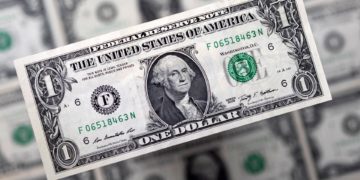Risk aversion was once again the main theme, although the dollar edged lower against its major rivals in the last trading session of the day. Lower US Treasury yields undermined demand for the greenback, as the 10-y note yields 2.97%, after peaking earlier in the day at 3.06%.

The World Bank lowered this year’s global GDP forecast to 2.9% from 4.1%. WB President David Malpass warned that faster-than- Malpass added that new energy and food production is imperative for Europe and the world, as it would help reduce prices and inflation expectations.
The EUR/USD pair recovered from a fresh weekly low of 1.0651 to end the day a few pips above 1.0700. The GBP/USD suffered an early knee-jerk and bottomed at 1.2429, but later recovered to end the day near 1.2590.

US Treasury Secretary Janet Yellen testified on the Fiscal Year 2023 Budget before the Senate Finance Committee.
She said that the US economy faces challenges from “unacceptable levels of inflation”, as well as headwinds from supply chain snags. An appropriate budget is needed to complement Fed’s actions to tame inflation without harming the labor market.
Wall Street managed to revert its negative tone and posted gains in the last hours of trading, helping mostly commodity-linked currencies. The AUD/USD pair is currently in the 0.7230 price zone, while USD/CAD trades around 1.2520, holding at its lowest in seven weeks.
The USD/JPY pair kept advancing, reaching a fresh multi-year high of 132.99 to end the day at 132.55. USD/CHF posted modest intraday gains to settle around 0.9722.
Weaker US government bond yields pushed XAUUSD higher. The bright metal changes hands at $1,855 a troy ounce. Crude oil prices, on the other hand, benefited from the positive tone of Wall Street, with WTI at $120.20 a barrel.
Markets’ volatility reflects uncertainty about the economic future amid fears aggressive quantitative tightening will provoke recessions among major economies.











































